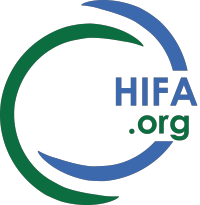Dear All,
Following the previous evidence summaries on early childhood development and health risk factors shared in an earlier email, these four new fact sheets published by WHO and UNICEF examine critical issues of access, equity and inclusion affecting young people across the WHO EuropeanRegion.
* Access to services: Less than 25% of countries in our Region allow adolescents to access health services based on maturity without parental consent. In many countries, the age of consent for health services exceeds the age of criminal responsibility, creating significant barriers to care that conflict with children's rights under the UN Convention. Learn more [1]
* Sexual and reproductive health: Adolescents face multiple barriers in accessing sexual and reproductive health services, including restrictive laws requiring parental consent, limited access to free contraception and emergency contraception, and barriers to STI testing and counselling. While over 80% of countries have school sex education policies, implementation gaps remain significant: only half collect data on adolescents' knowledge, and just one-fifth allow school nurses to provide contraceptive services without a doctor's prescription. Learn more [2]
* Refugee and migrant children: Our Region now hosts 9 million forcibly displaced children, presenting urgent challenges for health systems and society. These children experience multiple threats to their well-being: trauma and difficult conditions that harm their development, unsafe environments in reception centres and refugee camps, and barriers to accessing essential healthcare. Without targeted intervention, these challenges will have long-term implications for both individual health outcomes and regional development. Learn more [3]
* Impact of COVID-19 on education: The pandemic created unprecedented educational disruption across our Region, with school closures averaging 138 days. Younger children, those from less affluent families, and those living with health conditions experienced the most severe impacts, with up to 40% reporting negative effects on their learning. Learn more [4]
All ten fact sheets can be found here [5].
These challenges highlight critical gaps in our health systems and social support structures, particularly for our children and young people living in vulnerable situations. They demonstrate where targeted policy action and cross-sector collaboration can make a significant difference in ensuring equitable access to health services and education.
Kind regards,
Amy
Links:
[1] https://gbr01.safelinks.protection.outlook.com/?url=https%3A%2F%2Firis.w...
[2] https://gbr01.safelinks.protection.outlook.com/?url=https%3A%2F%2Firis.w...
[3] https://gbr01.safelinks.protection.outlook.com/?url=https%3A%2F%2Firis.w...
[4] https://gbr01.safelinks.protection.outlook.com/?url=https%3A%2F%2Firis.w...
[5] https://www.who.int/europe/publications/i
CHIFA profile: Amy Jane Stevens is a Paediatrician at the Yorkshire and Humbar Deanery in the UK. Professional interests: International child health. amyjanestevens AT doctors.org.uk

